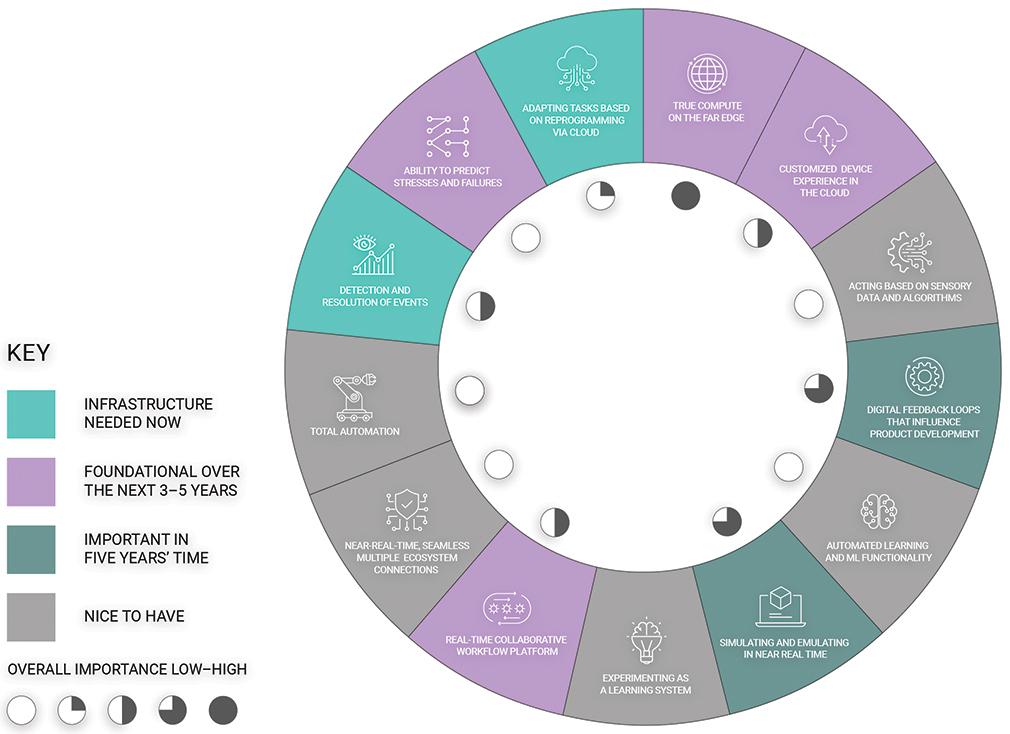Seventy percent of GDP growth in the global economy between now and 2030 will be driven by machines, according to PwC.
The rise of a new machine economy will have smart, connected, autonomous machines and devices carry out the necessary activities of production, distribution, and operations with little or no human intervention. And this new economy will be powered by intelligent systems.
Visionary leaders in the energy and utility industry and many other industries will implement new technologies and combine them with capital investments in ways that help them grow, expand, diversify and improve lives.
About 10 years ago, an insightful CTO at a major carrier shared his prediction that edge cloud computing, AI/ML and 5G connectivity will enable mind-blowing innovations that will help us get to net zero carbon emissions. At the time, that seemed like a bold statement, and perhaps it still does, but today placing workloads at the edge seems to be exactly what’s top-of-mind for many of the industry leaders.
We don’t need to be storytellers to convey the message that it is time to make changes; every day the world itself is telling us why it’s time. It is no longer about the “why,” it’s about the “how.” So how do we get there? The humongous amount of data we have at hand will help us shape and form the coalitions we need to create across the industries with colleagues, partners and competitors.
But right now, the energy and utility industry isn’t the one leading the charge towards an intelligent systems future. Spoiler alert: it’s the telco industry, and it makes sense, given that companies like Verizon and Vodafone have been investing heavily in 5G in recent years to support future innovations like smart cities, smart manufacturing, advancements in telemedicine and more.
But the good news is that it’s not at all too late for the energy industry — in fact, the timing is just right — and there are plenty of lessons learned from other forward-looking industries that can be applied.
State of the union for energy companies & intelligent systems
The right infrastructure and foundational investments for the energy industry’s intelligent systems needs could shift the way the industry functions and delivers.
A recent study shows that at least 59% of executive leaders in energy see the value of intelligent systems for their future success whether it’s the ability to predict system failures and resolutions, seamlessly link all systems between supplier and end customer or make business decisions autonomously.
But for many, the pathway to the future is not clear and only 26% are currently benefiting from optimized ROI related to intelligent systems. More than 40% of energy companies are in a nascent state of implementing intelligent systems. The gap shows that while the belief is there, the promise of intelligent systems hasn’t yet been fully realized.
For many energy industry executives, the ambition for five years from now includes a much more aggressive focus on data-centric decision-making on the far edge of the cloud. Eighty-one percent of leaders believe that embedded devices and applications will increasingly be used in innovative ways that are still undiscovered, in a dynamic sector rife with possibilities.
My many discussions with energy companies illustrate that while the destination is clear, the roadmap for how to tap into the promise of the machine economy and the intelligent edge is anything but. So, let’s dig a little deeper on that topic.
Blueprinting for the intelligent edge future
In the energy sector, there are 13 common characteristics that will drive intelligent systems' success. While all these characteristics are important, a handful must be addressed first. The sequencing of these characteristics will matter.
Highest impact:
- True compute on the far edge
- Simulating and emulating in near real time
- Digital feedback loops that influence product development
- Customized device experience in the cloud
- Real-time collaborative workflow platform
- Detection of events and resolution
This shows that the ability to compute on the far edge is the most important characteristic of intelligent systems success in the energy industry, according to executives that were interviewed. It’s of foundational importance for the next three to five years. And you can see how the other characteristics unfold from there.
Proper investment is essential. Companies must make a core initial investment in customization in the cloud, performance on the edge and prediction of stresses and failures, along with a real-time workflow environment allowing teams and business units to bring it all together on the far edge.
A dialog about intelligent systems for a better future
In closing it may for us all to continue to discuss what the future of embedded devices and solutions looks like in an intelligent systems world, the barriers to and drivers for adoption of intelligent systems, the factors that would accelerate the adoption of intelligent systems for the energy industry specifically, how to best prioritize investments and what key metrics for success look like.
And if blueprinting is about the “how,” it’s also important not to forget about the “why,” but I am sure mother nature will keep reminding us. I look forward to a collaborative dialog about how intelligent systems in the energy and utility sector will not only protect against cyberattacks, but drive a clean, affordable, reliable and data-driven new reality. It’s a small step for everyone, but a giant leap for humankind.
 Thomas Rosén leads the EMEA sales organization for Wind River. In this role, he is responsible for the go-to-market strategy, ecosystem development, sales growth strategy and sales organization for the EMEA region. He possesses more than 25 years of business and technical experience in intelligent systems, embedded software for mission-critical markets including Energy and Telecom. Rosen holds an MSc in data telecommunications & networks from University of Salford and a BSc in computer science from Mälardalen University.
Thomas Rosén leads the EMEA sales organization for Wind River. In this role, he is responsible for the go-to-market strategy, ecosystem development, sales growth strategy and sales organization for the EMEA region. He possesses more than 25 years of business and technical experience in intelligent systems, embedded software for mission-critical markets including Energy and Telecom. Rosen holds an MSc in data telecommunications & networks from University of Salford and a BSc in computer science from Mälardalen University.








